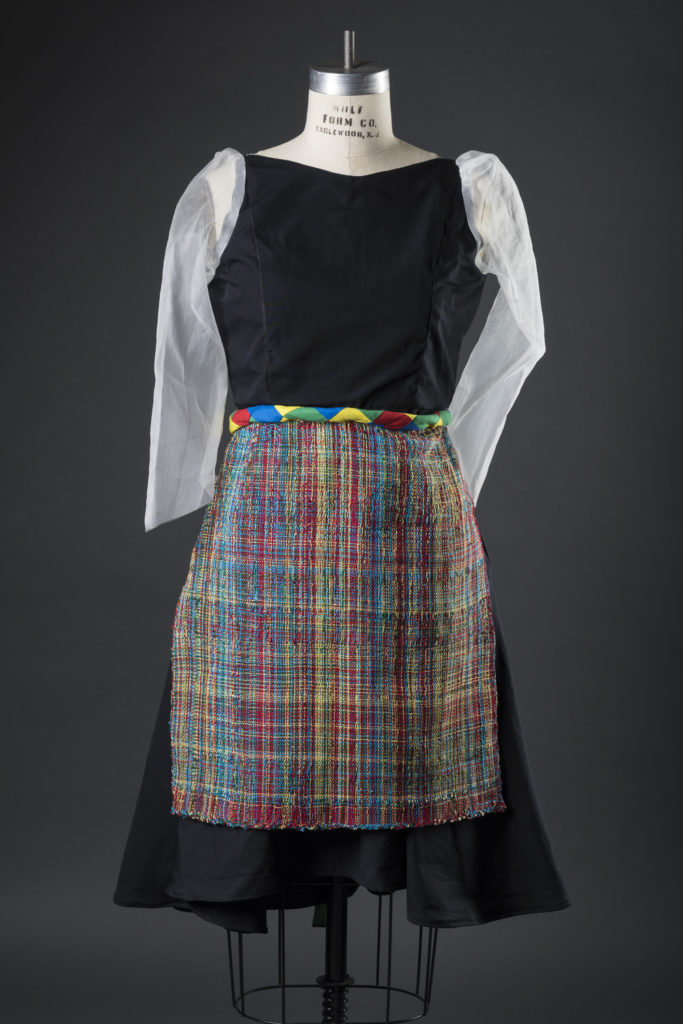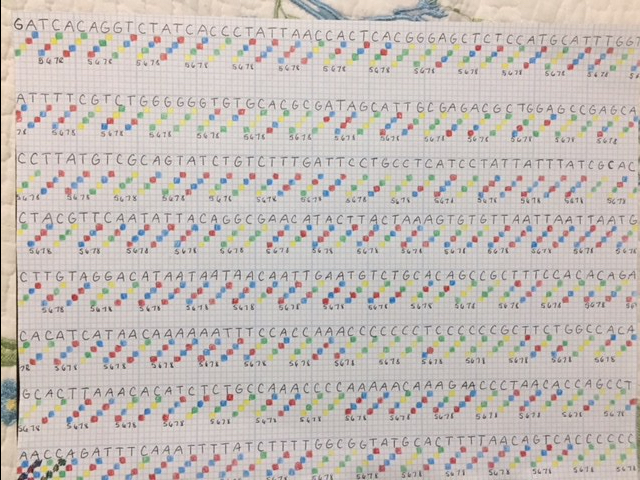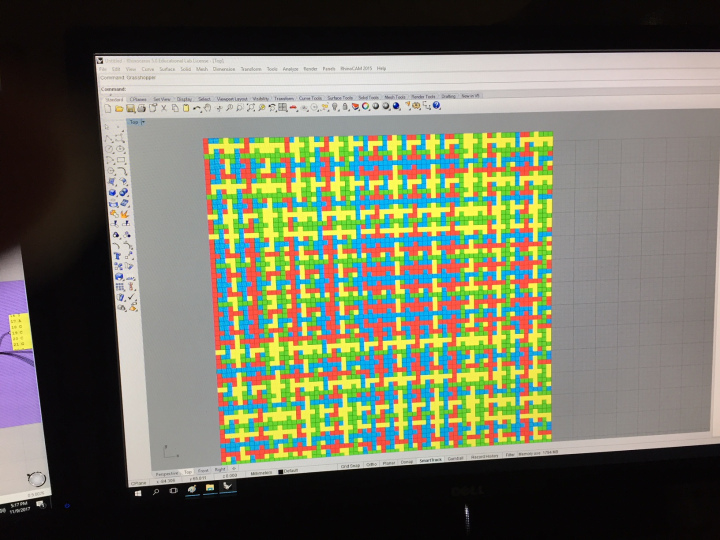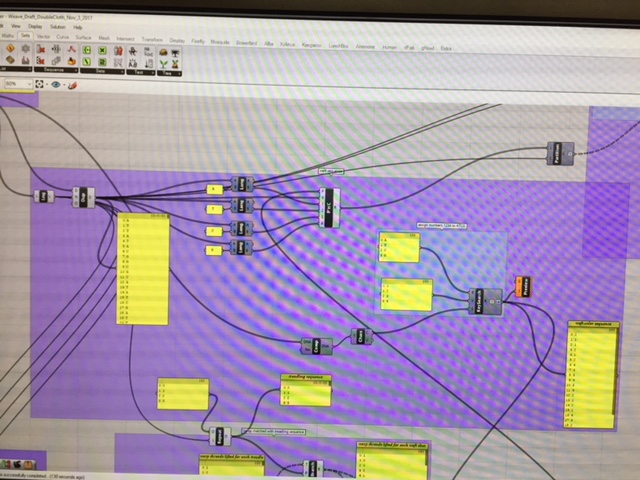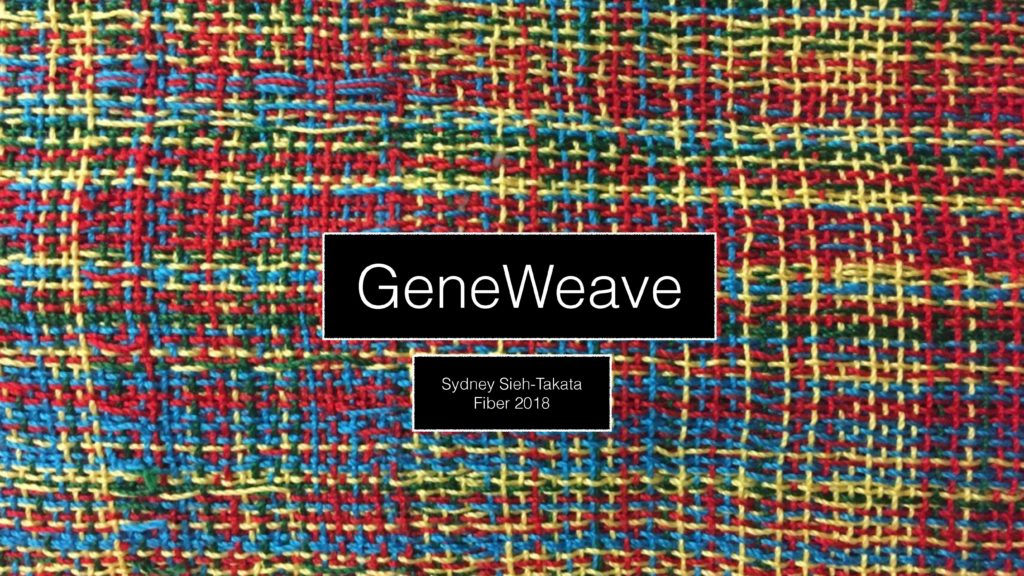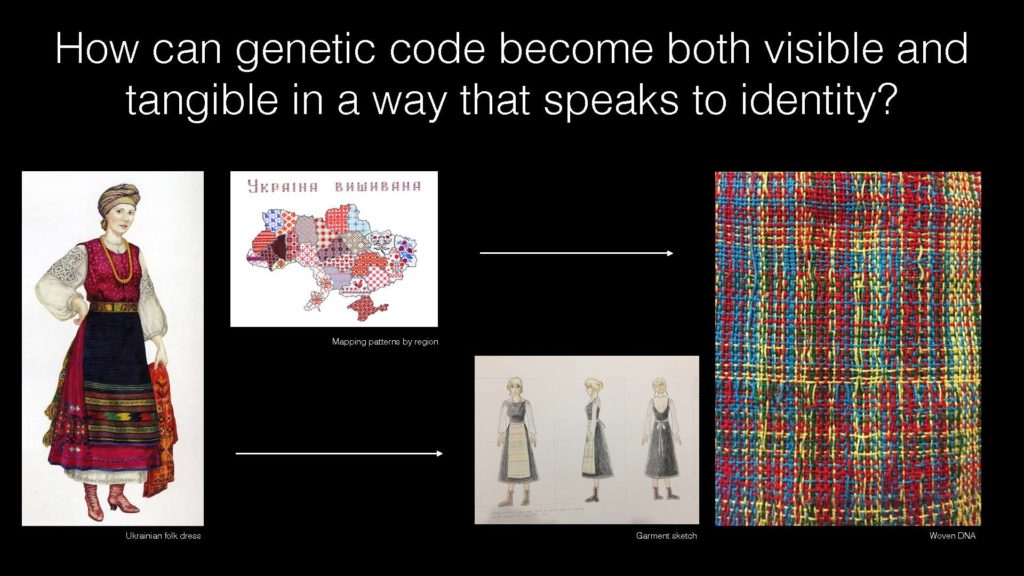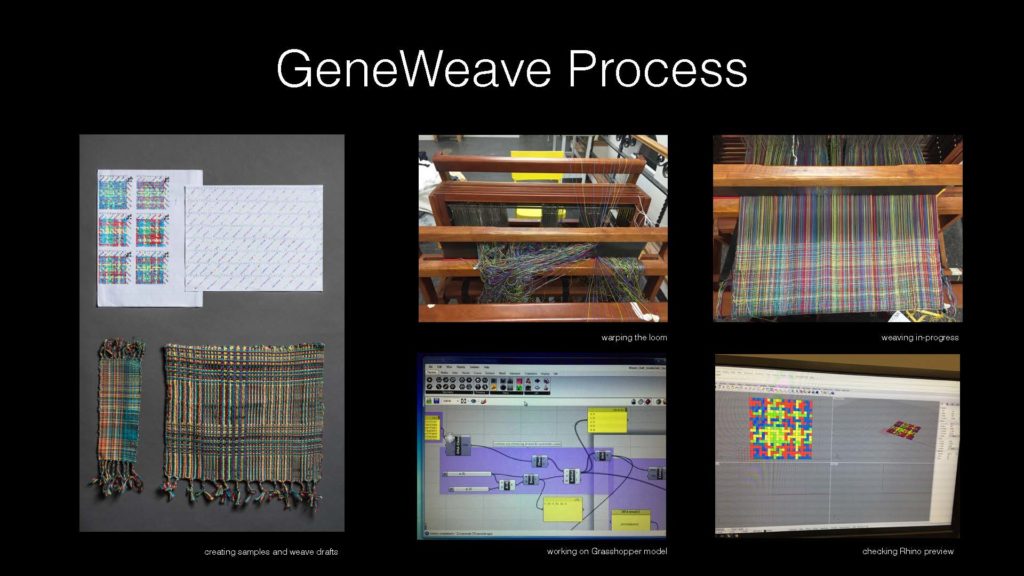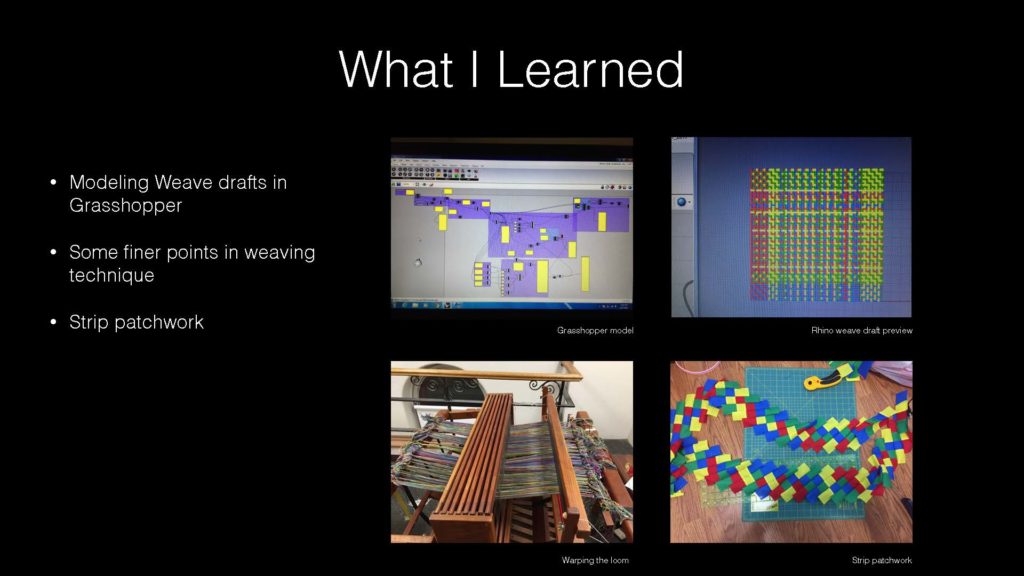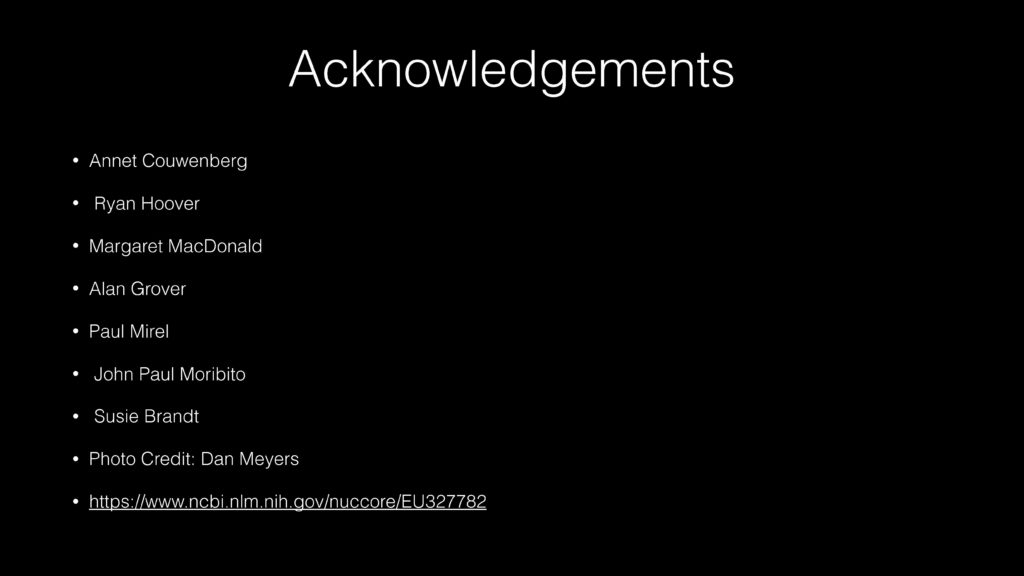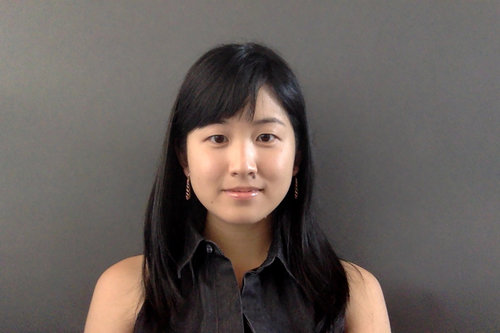
Sydney Sieh-Takata, Fiber, ’18
Sydney Sieh-Takata is a BFA candidate at the Maryland Institute College of Art (MICA) majoring in Fiber. She is interested in exploring how increasing access to gene sequencing and editing technology will affect people’s sense of identity. Her work primarily focuses on data visualization through garment making and storytelling.
Project Overview
GeneWeave investigates how to make genetic code both tangible and visual by translating DNA into fiber-based processes like hand weaving and CAD generated weave drafts. The resulting woven cloth has been used to make an apron, referencing Ukrainian folk costumes that identified the region a wearer came from based on the apron’s pattern. The particular DNA visualized in this apron is an excerpt of a genetic marker associated with people of Ukrainian ancestry. Viewers are invited to preview their own weaving patterns based on genes of interest through the Grasshopper model.
Process
I compiled a dropdown list of genes viewers may be interested in within the Grasshopper work area, so visitors to the exhibition do not have to go online to find a gene. Some of the genes I am adding are ones associated with disease like the BRCA 1 and BRCA2 for breast cancer, or for popular organisms like dogs, cats, tulips, etc. Users could also insert the protein coding genes from the Biobricks modules in the Alba plug-in. Since the genes can be several hundred to several hundred thousand base pairs long, it would not be possible for Rhino and Grasshopper to process the entirety into a weaving draft model in a timely manner without crashing, so I had to place a restriction on the number of nucleotides that will be used and which regions of the code will be coded. This limitation is accurate to the physical weaving process, which is restricted by the size of the loom.
